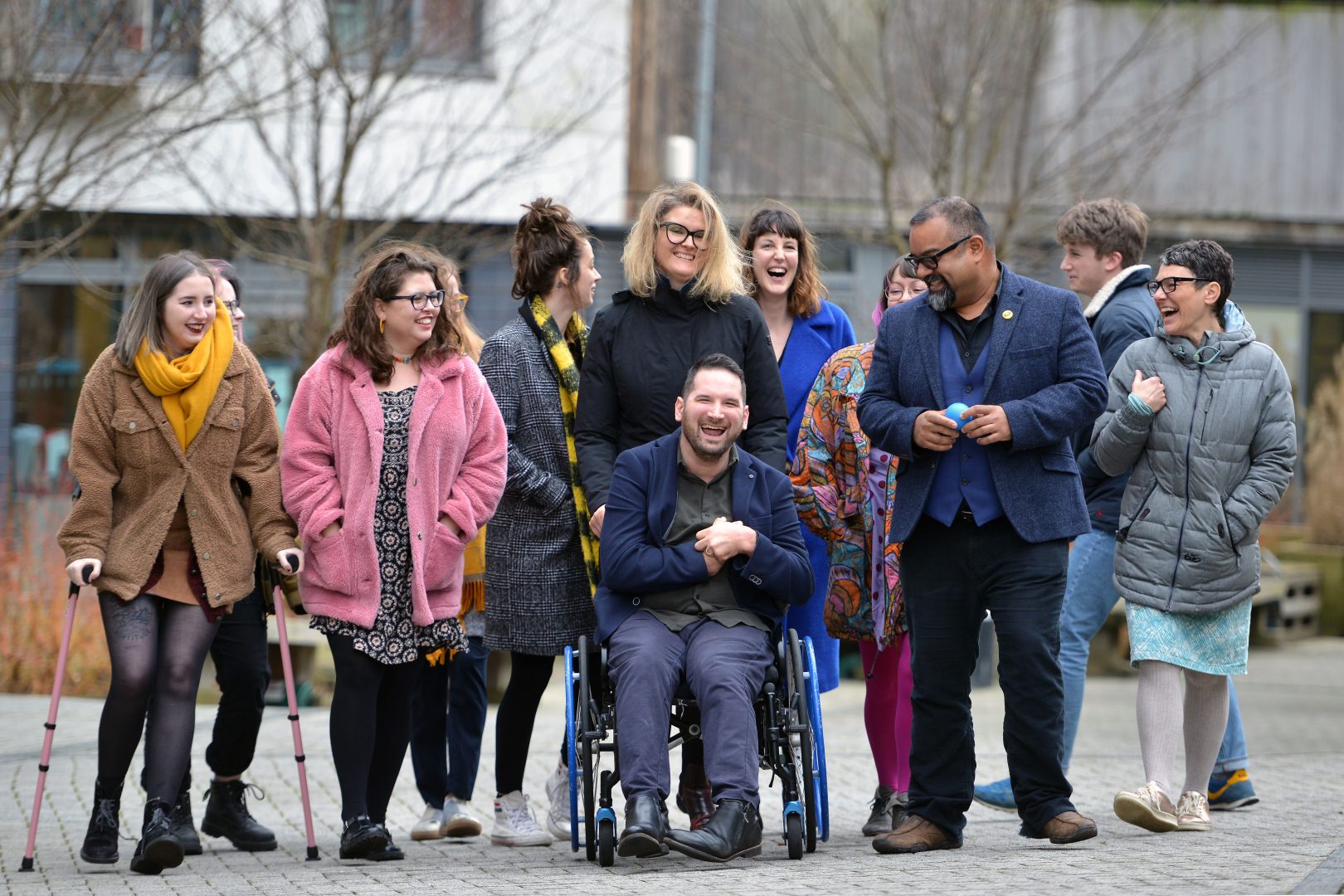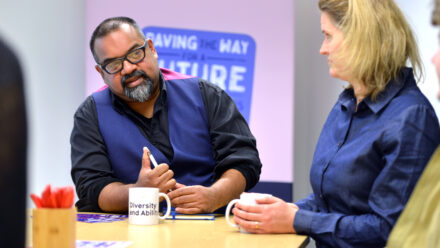Don’t look to positions of authority to find examples of great leadership; they’re all around you
14th October 2021 by Ellie Thompson
When you search for examples of great leadership or great quotes on leadership, you’re usually confronted by successful billionaires, leading politicians, or historical figures. But often, you can find examples of great leadership much closer to home.
There’s a difference between being a leader and being in a position of power, and by focusing on the former, you can establish the real qualities of great leadership from what you see in those around you.
1. Never stop getting stuck in
For proof that leadership skills can be found everywhere, our Director of Accessibility and Inclusion, Adam Hyland, discusses how he often finds the best examples of great leadership within his team: “Within D&A, there are members of the teams that I work with on a daily basis, who may hold different responsibilities, but always reach out to support others no matter how much they have on their plate. And that, for me, shows incredible leadership.
“It inspires me to make sure that no matter how busy I may feel, I always make space to get involved, do the hard graft and support the team. Your most used phrase as a leader should be: ‘how can I help?’”
Doing so doesn’t just give you a better appreciation for what your team are doing, where their successes and challenges lie; it also makes sure they know that you have that appreciation and know that you’re still a part of that team no matter your role.

2. Strive to improve things for others
No matter how much or how little power you have, if you’re motivated by a desire to make positive change, you’ll always be exemplifying great leadership. For our CEO, Atif Choudhury, the greatest leader he’s ever known was his grandfather: “He was an orphan at 10, but was always motivated to make things better for others. He grew up to build hospitals, schools and medical centres, eventually earning enough money to buy the village he was born in and ensure that it was a safe and stable home for everyone within the village; that they never had to pay rent.”
And if, like Atif’s grandfather, you do find yourself in a position of power, it’s important to acknowledge and interrogate that power. Atif says: “it’s about knowing where that power is, and acknowledging where it’s too much, where it should maybe give out, in a good way, to make space for others to create change.”
3. Focus on creating space
The leadership skills that seem to be most celebrated are those that involve taking up space. For example, being outgoing, steering things, making decisions, and public speaking. The most underrated, but important, great leadership skills are listening, giving time, and taking a seat.
You’ll be so rewarded if you make the space to express curiosity in your team members, their roles and responsibilities but also what drives them, and what excites them. Through doing so, you’ll create an environment where your teams feel safe to bring themselves to work in whatever way they choose to.
Atif talks about how he can remember the impact of a leader creating this space for him before: “It’s unforgettable, it’s inspiring, it creates a sense of belonging and safety. I’m reminded of the Maya Angelou quote: “people will forget what you said, people will forget what you did, but people will never forget how you made them feel.”
4. Don’t make all the decisions
Although you can’t be an inclusive leader without demonstrating diverse leadership styles, one of the best tools at your disposal is a transformational leadership style. Transformational leadership means creating, communicating, and implementing a communal vision for change. It involves prioritising the experience of your team so that individuals feel nurtured and encouraged to be autonomous.
And how can you encourage this sense of autonomy?
Create a safe space for people to make their own tough decisions. As Adam says, “As a leader, your role should often be not to gatekeep decision-making, but to be a sounding board to allow your team to talk through their decisions, to offer your input and advice, but ultimately to say ‘this is just my opinion on what you’re saying, but I will support whatever decision you come up with and run with it.”
Atif adds: “really, leadership is about trust. Letting go of decision-making may trigger fears kicking in, but to be controlled by those fears just doesn’t work. It doesn’t work strategically, but it also doesn’t work culturally or psychologically, for either your team or you.”
5. Welcome mistakes
“Leaders make mistakes all the time,” Adam notes. “Whether they admit it or not is a different matter. But mistakes should be acknowledged because that’s how we learn and grow.”
Being open about your own mistakes creates a culture where mistakes aren’t something to be ashamed of or brushed under the carpet but are welcomed as learning opportunities. Within a culture like this, employees can take greater risks and develop their confidence and independence safe in the knowledge that mistakes are commonplace and bring us something positive. Also, just as importantly, allowing for mistakes and exemplifying this by discussing your own mistakes, creates an environment that’s more enjoyable to work in, increasing employee engagement, boosting staff retention, and making for successful, inclusive talent management, too.
6. Celebrate diversity
One of the most important things for you to do ensure effective leadership is to centre diversity and inclusion in everything you do. It’s vital you don’t just recognise diversity but see its authentic value. The lived experience brought by welcoming and celebrating the diversity that already exists within your organisation has the potential to both transform your organisational culture and ensure business success.
You can make this happen by encouraging the sharing of lived experience from both within and outside of your team. For example, at D&A, our quarterly Development Days give us space to share lived experience and reflect on best practice from across the organisation. But externally, we also deliver workshops that give voice to these same lived experiences, training organisations on neurodiversity, disability inclusion, and how to foster wellbeing.
How will you know when you’ve successfully created an environment where diversity is celebrated?
Here are 7 signs you’ve created a truly inclusive workforce.
7. Recognise the difference between leadership and management
If we ask you to think of a great leader that’s influenced or inspired you, it’s very likely that you’ll think not of a manager in your workplace but of someone who had a profound affect on your life. Of course, managers can be great leaders, but it’s important to recognise that there’s a profound difference between how we define leadership and management.
Adam explains the distinction:
“When I think of a leadership definition, I think of something that can be shown regardless of any real or perceived structure, hierarchy or structure. It inspires from wherever it’s found. Management is much more about a structure, a defined role and responsibility.
“And, in all honesty, there are a lot of managers in the world that aren’t leaders. I think sometimes people get put into management positions because they’re good at their job, but that doesn’t mean they’re good at leading. They don’t have the level of awareness- both self-awareness and awareness of others- to lead others to success.”
So don’t think that getting to a management position means the hard part is over. Make sure you’re constantly striving to improve your leadership qualities.


